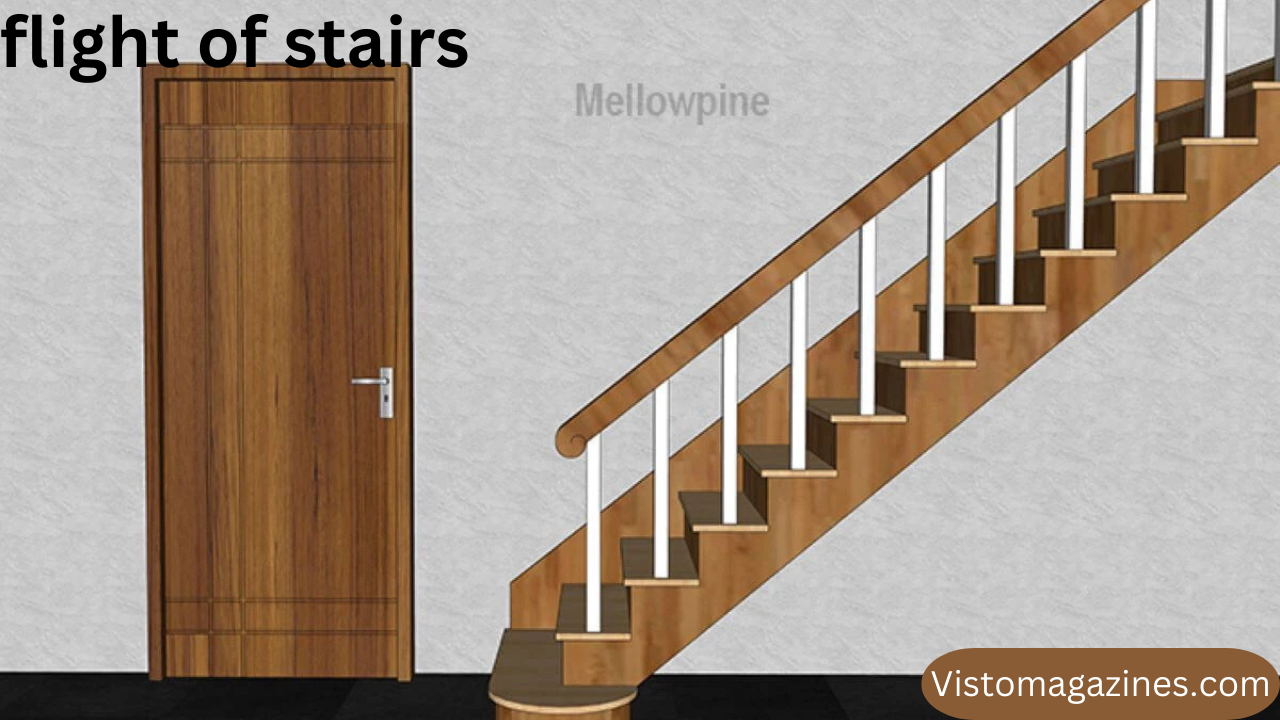Understanding the Concept and Importance of a Flight of Stairs
A flight of stairs is one of the most fundamental architectural features in buildings worldwide. They serve as a practical solution for connecting different levels, offering a means of vertical movement in spaces where elevators or escalators might not be necessary or feasible. The concept of a “flight of stairs” refers to a continuous series of steps that allow a person to move from one level to another. In this article, we will explore the significance of a flight of stairs, its design, history, types, safety considerations, and its impact on daily life.
What is a Flight of Stairs?
A flight of stairs is a set of steps that typically connects two levels of a building or structure. It can vary in terms of the number of steps, the height between the levels, the design of the stairs, and their use in different settings. The steps may be straight, spiral, or curved, depending on the architectural requirements of the space. Generally, a flight of stairs will consist of multiple steps in a sequence, without interruption, designed to provide safe and effective access between floors or levels in a building.
The term “flight” refers to a continuous set of steps, whether long or short, without a landing or break. However, some designs may include intermediate landings for easier navigation or for aesthetic reasons, which divide the flight into smaller sections.
History of Stairs: From Ancient to Modern Times
The concept of stairs has existed since ancient times. The earliest examples of stairs can be traced back to prehistoric civilizations, where people built rudimentary steps carved into rock or wood to ascend to higher ground. In ancient Egypt, Greece, and Rome, more advanced stone stairs were built for religious temples, palaces, and homes. The evolution of stairs continued through the Middle Ages and Renaissance periods, with an increasing emphasis on decorative elements, such as ornate railings and grand staircases in palatial settings.
In modern times, the design of stairs has evolved significantly. Today, stairs are an integral part of architecture in almost every type of building, from residential homes to high-rise commercial structures. Technological advances in materials and construction methods have led to a variety of designs, from simple wooden staircases to complex metal, glass, and concrete structures.
The Importance of a Flight of Stairs in Architecture
A flight of stairs holds more importance in architecture than simply being a functional feature. It plays a key role in both the aesthetic appeal and the practicality of a building. In many cases, stairs are considered the centerpiece of an entryway or foyer, making them one of the first elements a person encounters when entering a building. The style, design, and materials used in the flight of stairs can greatly influence the overall aesthetic of the space.
Moreover, stairs have a significant impact on how people navigate a building. In multi-story buildings, they provide essential access between floors, offering an alternative to elevators and lifts. Stairs are especially important in cases of power outages, emergencies, or when accessibility via elevators is limited.
Types of Flights of Stairs
There are several different types of flights of stairs, each suited to different architectural styles, building types, and purposes. Below are some common types of staircases:
- Straight Flight Stairs
This is the most basic and traditional design for a flight of stairs. It consists of a single, uninterrupted set of steps from one floor to another. Straight flight stairs are commonly used in residential buildings, providing a straightforward and simple solution for accessing upper levels. - L-Shaped Stairs
An L-shaped flight of stairs consists of two straight sections that are connected at a 90-degree angle. This design is often used when space is limited or when a building has a corner or a wall where the stairs can turn. - U-Shaped Stairs
A U-shaped flight of stairs consists of two straight sections that run parallel to each other, with a landing at the top. This design is commonly used in larger homes or buildings where space allows for more intricate stair layouts. - Spiral Stairs
Spiral stairs are compact, curved staircases that wind around a central pole. These stairs are particularly useful in smaller spaces or in areas where a traditional staircase might take up too much room. They can also be a unique design feature that adds a touch of elegance to a room. - Circular Stairs
Circular flights of stairs are similar to spiral stairs but feature a larger curve, creating a more open and sweeping appearance. These stairs are often seen in grand homes, museums, and public buildings. - Double Helix Stairs
Double helix stairs are a rare but dramatic design that involves two sets of spiral stairs that twist around each other. These are typically found in palatial or historical buildings and are often used as a statement architectural feature.
Stair Safety and Design Considerations
Stair safety is a critical aspect of both residential and commercial construction. A poorly designed or unsafe flight of stairs can pose a significant risk to individuals, particularly in high-traffic areas or public buildings. Therefore, careful attention must be paid to design, materials, and safety features when constructing stairs.
Key safety considerations for stairs include:
- Step Height and Depth: The height (riser) and depth (tread) of each step should conform to standard dimensions to ensure comfort and safety when using the stairs. Too high a riser or too shallow a tread can make stairs difficult to use, while too shallow a riser or too deep a tread can lead to accidents.
- Handrails and Guardrails: Stairs should be equipped with sturdy handrails to provide support, especially for elderly individuals or those with mobility issues. Guardrails may also be necessary on higher staircases or in public spaces to prevent falls.
- Lighting: Adequate lighting is essential for stairways, particularly in dimly lit areas or at night. Well-lit stairs help users identify steps and landings, reducing the risk of missteps.
- Materials: Non-slip materials should be used for the treads to prevent falls. Wood, stone, metal, or carpet can all be chosen based on aesthetic preference, but safety should always be the priority in high-traffic areas.
- Width and Space: The width of the flight of stairs should be wide enough to accommodate the expected number of users at one time. In public or commercial buildings, wider stairs help prevent congestion and allow for the safe passage of individuals.
The Impact of Flights of Stairs on Health and Fitness
In addition to their practical function, flights of stairs have a positive impact on health. Climbing stairs is an excellent form of cardiovascular exercise. It strengthens the muscles of the legs and improves overall endurance and stamina. Many health-conscious individuals incorporate stair climbing into their fitness routines to improve lower-body strength, burn calories, and boost heart health.
For people who live in multi-story buildings or work in high-rise office buildings, choosing the stairs over the elevator can be a great way to stay active and fit. Even short bursts of stair climbing can have beneficial effects on the body, improving circulation, boosting metabolism, and increasing energy levels.
Conclusion: The Enduring Relevance of a Flight of Stairs
The flight of stairs, although often taken for granted, is a vital architectural element that connects different levels of a building. It plays an essential role in the practical movement of people within buildings while also contributing to the overall design and aesthetic appeal of a structure. From ancient stone stairways to modern spiral and circular designs, stairs have evolved over centuries to serve both functional and aesthetic purposes.
Furthermore, stairs offer a simple yet effective way to improve fitness and health, promoting physical activity in a world where sedentary lifestyles are increasingly common. Whether designed as a functional feature or as an eye-catching architectural statement, the flight of stairs remains an indispensable part of modern construction.
As we continue to develop more sustainable, efficient, and aesthetically pleasing buildings, the flight of stairs will undoubtedly continue to evolve, balancing both form and function for years to come.



